
Why Do Dogs Tilt Their Heads When We Talk to Them?
Introduction
Ah, the classic canine head tilt! It’s that adorable moment when your dog cocks their head to one side, looking at you as if they’ve just unlocked the secrets of the universe. This charming behavior has captivated dog lovers everywhere. But why do dogs do this? Is it because they understand every word you say, or are they simply trying to look cute for treats?
Many of us find ourselves asking these questions, and you’re not alone! The head tilt is one of those delightful quirks that spark curiosity among dog owners and enthusiasts alike. Understanding why our furry friends exhibit this endearing behavior can enhance our bond with them. It can also help us become more attuned to their emotional and communicative needs.
In this article, we’ll explore the fascinating reasons behind why dogs tilt their heads when we talk to them. Whether you’re a proud dog parent or simply a canine admirer, knowing more about this behavior can deepen your appreciation for your four-legged companions. Let’s uncover the science and charm behind those head tilts!

Understanding the Behavior
The Adorable Head Tilt
You’ve probably seen it happen a million times. You call your dog’s name, and voilà! Their head shifts to one side, almost as if they’re trying to decipher a complex riddle. This behavior often occurs in reaction to familiar sounds like their name, specific commands, or even high-pitched squeaks from a toy.
When your dog tilts their head, it’s hard not to feel a surge of affection. This moment signifies their engagement with you and shows they’re paying attention. It creates a warm bond between you and your pup, illustrating a mutual understanding. Plus, let’s be honest—who can resist that adorable expression?
To reward that adorable behavior, consider treating your pup with a Dog Treats Variety Pack. It’s a delicious way to show your furry friend just how much you appreciate their cuteness!
Dogs’ Hearing Capabilities
Dogs have an extraordinary sense of hearing. They can detect sounds at frequencies much higher than humans can. This unique ability often leads them to tilt their heads to better locate and process the sounds around them. When your dog hears a rustle in the bushes or that ever-so-tempting crinkle of a treat bag, they may tilt their head to hone in on the source of the noise.
For example, many dog owners have noticed their pets tilting their heads when they hear unfamiliar sounds. One owner shared that their dog would tilt its head at the sound of a siren, as if trying to figure out where it was coming from. This behavior isn’t just cute; it’s a practical response to their environment!
In essence, the head tilt serves as a tool for dogs to navigate the auditory landscape. Dogs’ floppy ears, which can sometimes obstruct their hearing, prompt them to adjust their head position for optimal sound clarity. So, the next time your pup gives you that head tilt, remember: they’re not just being adorable; they’re actively trying to understand the world around them!
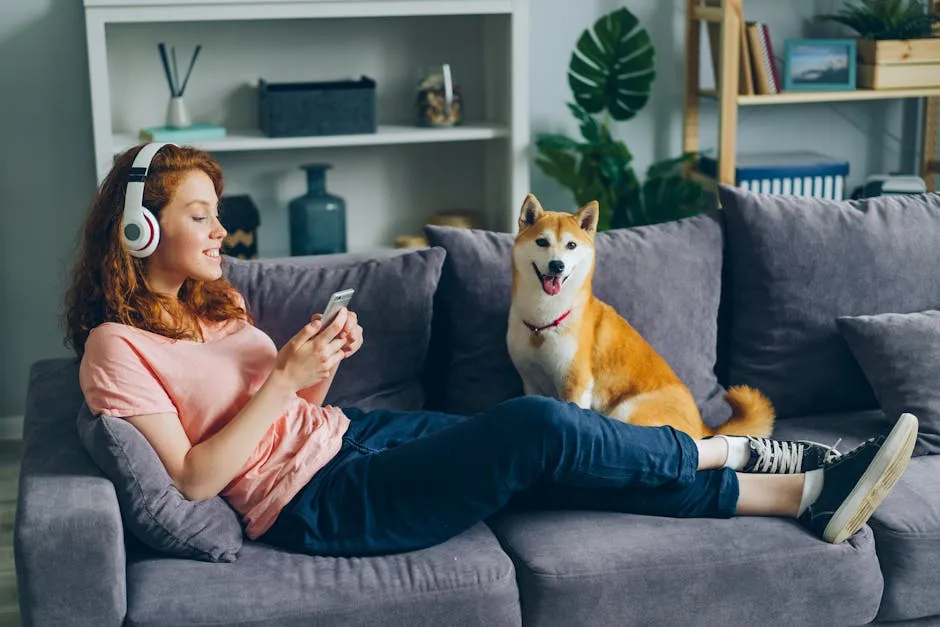
Reasons for Head Tilting
To Hear Better
One of the most captivating aspects of canine behavior is the head tilt. This adorable quirk often occurs when dogs hear sounds they’re curious about. But why do they do it? The answer lies in sound localization.
Sound localization is the ability to determine the origin of a sound. Dogs have an extraordinary sense of hearing, far superior to that of humans. They can detect frequencies ranging from 40 Hz to 60 kHz, while humans can only hear between 20 Hz and 20 kHz. This keen auditory perception allows dogs to pick up on sounds we may not even notice, like rustling leaves or high-pitched noises.
When a dog tilts its head, it’s likely trying to better locate the source of a sound. According to Dr. Nicholas Dodman, a veterinary behaviorist, this movement helps dogs adjust their ears. It opens up the ear canal, allowing them to hear more clearly. Think of it as their way of tuning in to the conversation.
To keep your dog engaged and mentally stimulated, consider investing in an Interactive Dog Toy. It’s a great way to challenge their senses and keep them entertained!
Recent studies support this notion. Researchers found that dogs often tilt their heads when they hear novel sounds, indicating they are trying to focus on something unfamiliar. In fact, a study published in Animal Cognition observed gifted word learners—dogs that could associate names with specific toys—tilting their heads 43% of the time when they heard the name of a toy. In contrast, typical dogs only tilted their heads 2% of the time. This difference suggests that the head tilt is linked to processing sounds and recognizing familiar words.
Dr. Stanley Coren, a prominent canine researcher, also points out that head tilting is more common in breeds with longer muzzles. Dogs like Greyhounds or Collies may need to tilt their heads to better hear or see what’s happening around them. Their longer snouts can obstruct their line of sight to some extent, prompting them to adjust their head position.
This head-tilting behavior isn’t just an endearing trait; it’s a functional response. Dogs are actively trying to make sense of their world, responding to sounds that pique their interest. So, the next time your furry friend tilts their head while you’re chatting, just remember—they’re not only being cute; they’re honing in on the conversation!
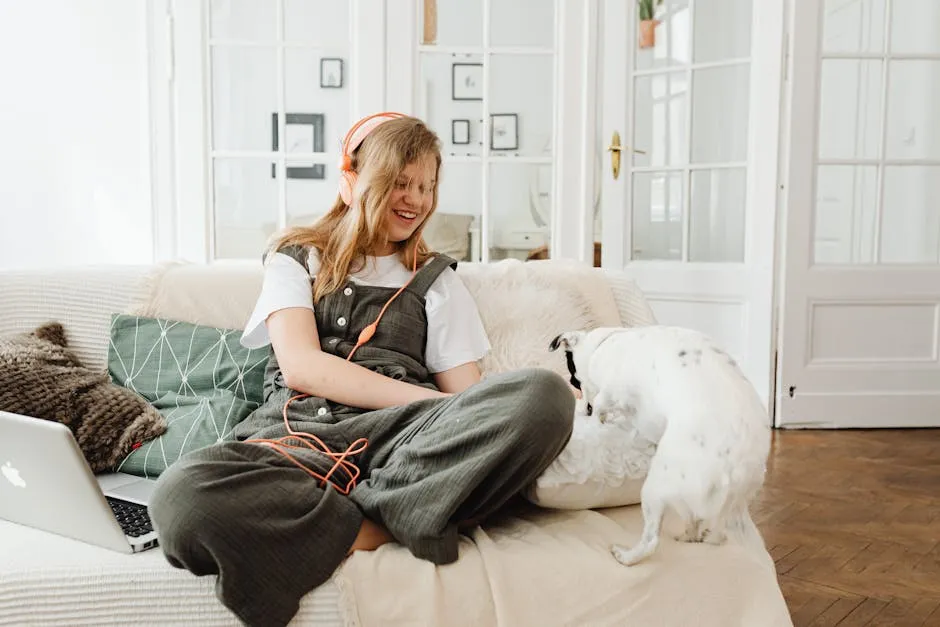
To See Better
Now, let’s address another fascinating reason for head tilting: vision. Dogs’ muzzles can obstruct their view of human facial expressions, which are crucial for understanding our emotions and intentions. Tilted heads might just be their way of getting a clearer perspective.
When you speak to your dog, they want to connect with you. The lower part of your face often conveys important information—like your mouth movements or expressions. However, a dog’s muzzle can block their view. By tilting their head, they can realign their line of sight and gain a better understanding of your emotions and intentions.
Dr. Stanley Coren’s research highlights this relationship between head shape and head-tilting frequency. In his studies, he found that dogs with longer muzzles, such as Greyhounds, tilted their heads more frequently than flatter-faced breeds like Pugs or French Bulldogs. This suggests that the longer the muzzle, the more likely a dog is to tilt its head to see better.
Interestingly, surveys have shown that a significant number of dogs with shorter muzzles also engage in head tilting. This indicates that, even with a less obstructive view, dogs might still benefit from tilting their heads. They could be trying to capture a more comprehensive visual perspective, enhancing their understanding of your tone and body language.
Moreover, it’s not just about seeing you better; head tilting is also a way for dogs to express their attentiveness. When they tilt their heads, it signals to you that they’re engaged and interested in what you’re saying. This interaction fosters a strong emotional connection between you and your pup.
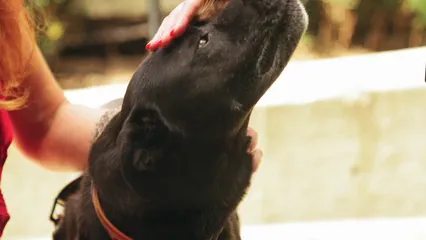
To ensure your dog feels comfortable and secure while exploring their environment, consider investing in a Dog Harness with Handle. It provides added support during your adventures together!
In summary, head tilting serves a dual purpose: it aids in sound localization and enhances visual perception. Whether they’re trying to hear your commands more clearly or gain a better view of your expressions, dogs are expert communicators. This charming behavior illustrates their innate desire to connect with us, making it an endearing and meaningful aspect of canine companionship.

A Learned Behavior
Have you ever noticed your dog tilting their head just when you say something exciting? This adorable action isn’t just for show. Dogs often learn that head tilting brings positive attention from their owners. Think of it as a cute little trick that gets them affection, treats, and praise.
When a dog tilts its head, it’s hard not to smile. This reaction usually leads to a flood of love from their human. Over time, dogs connect the dots: “If I tilt my head, I get that delightful petting or yummy treat!” This is where reinforcement comes into play.
Reinforcement is a fundamental concept in dog training. When a behavior is rewarded, it’s more likely to be repeated. So, when your furry friend tilts their head and you respond with excitement, they learn to associate this gesture with good things. It’s a win-win!
Interestingly, many dogs perform head tilts in response to specific words or sounds. For instance, saying “walk” or “treat” can trigger this behavior as they eagerly anticipate a fun experience. They’re not just trying to look cute—they’re actively engaging in a social interaction that strengthens their bond with you.
To help with positive reinforcement, consider using a Dog Training Clicker to mark desired behaviors. It can make training sessions even more effective and enjoyable!
In essence, head tilting is a learned behavior reinforced by positive feedback from their owners. This charming action showcases their intelligence and willingness to connect with us. So, the next time your pup gives you that adorable head tilt, remember—it’s their way of saying, “I’m all ears, and I know this gets me love!”

A Sign of Intelligence?
Could head tilting be a sign of intelligence in dogs? Many pet owners believe so! Some researchers argue that head tilting indicates a dog is processing information. A fascinating study focused on “Gifted Word Learners” revealed that certain dogs exhibit this behavior more frequently when they hear familiar words.
These gifted learners—dogs capable of remembering the names of various toys—tilted their heads 43% of the time when their owners called out the name of a toy. In contrast, typical dogs only tilted their heads 2% of the time. This striking difference suggests that head tilting may relate to cognitive processing rather than mere curiosity.
In addition, certain breeds seem to tilt their heads more often. For example, breeds known for their intelligence, like Border Collies, are more likely to engage in this behavior. This observation aligns with the idea that dogs who grasp the significance of words may tilt their heads to enhance their understanding.
So, is head tilting a reflection of canine smarts? It certainly seems that way! When your dog gives you that adorable head tilt, they might just be showcasing their ability to process information and engage with you. It’s a charming reminder of the incredible bond between humans and dogs, one head tilt at a time.

Emotional Connection
Let’s talk about the emotional side of head tilting. This endearing behavior isn’t just about hearing or seeing better; it has a significant social aspect. Dogs are natural mimickers, often reflecting our behaviors and emotions. When you tilt your head while speaking to them, they might mimic your action, deepening the connection.
This emotional bond is vital in human-dog relationships. Dogs are incredibly attuned to our feelings, and head tilting may serve as a way of showing empathy. They respond to our tone of voice and body language, seeking to understand us better. When your dog tilts its head, it’s like they’re saying, “I’m here for you. What’s going on?”
Moreover, this behavior enhances communication between dogs and their owners. The more engaged a dog is, the more likely they are to observe verbal cues and emotional signals. This mutual understanding fosters a strong bond, allowing both parties to feel connected.

For a great way to keep your dog comfortable during your outings, consider a Dog Bed. It provides a cozy spot for them to relax after a day of adventures!
So, the next time your dog tilts its head, remember: it’s not just a cute gesture. It’s a beautiful expression of their emotional connection to you, an adorable reminder of the love and understanding that exists between you and your furry friend.
When to Be Concerned
Potential Health Issues
While head tilting is often a charming behavior in dogs, it can sometimes signal underlying health issues. If your dog tilts their head frequently without any apparent reason, it’s essential to take note. Conditions like ear infections or vestibular disease may be at play.
Ear infections are a common culprit. When a dog has an infection, they may tilt their head to relieve discomfort or pain. Look for signs such as excessive scratching at the ears, foul odor from the ears, or discharge. If your furry friend is tilting their head and displaying these symptoms, it’s time for a vet visit!
Vestibular disease is another condition that can manifest through head tilting. This disorder affects a dog’s balance and can cause them to tilt their head to one side persistently. Other symptoms include disorientation, stumbling, and even vomiting. If your dog exhibits these signs, it’s crucial to consult a veterinarian promptly.
Pet owners should also monitor for other unusual behaviors. If your dog is lethargic, has difficulty walking, or seems disoriented, don’t hesitate to seek professional help. Early intervention can make a significant difference in treatment outcomes.
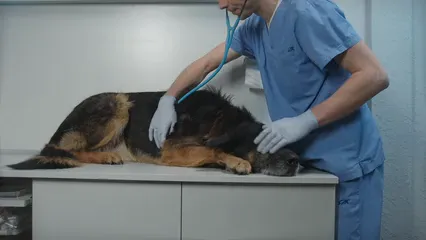
Expert Recommendations
Veterinarians and animal behaviorists suggest distinguishing between normal and concerning head tilting. If your dog tilts their head occasionally while responding to auditory cues or while engaging with you, this is likely normal behavior. However, if the head tilting is excessive or occurs without any auditory stimuli, it’s time to be concerned.
Dr. Nicholas Dodman, a veterinary behaviorist, emphasizes the importance of regular check-ups. During these visits, your vet can assess your dog’s overall health and address any potential issues. Awareness of other symptoms related to head tilting is also crucial. If your dog starts showing signs of discomfort or unusual behavior alongside head tilting, don’t hesitate to reach out to your veterinarian for guidance.
Additionally, keep an eye on your dog’s body language. If they appear anxious or fearful while tilting their head, it might indicate that they are confused or uncomfortable. In such cases, consulting a professional can provide peace of mind and ensure your pup’s well-being.
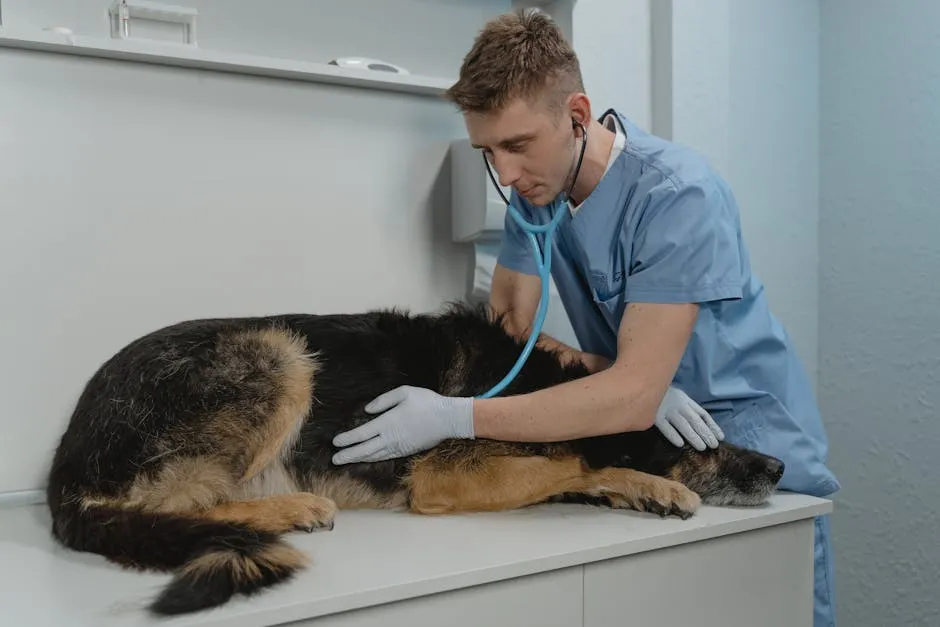
For peace of mind on the go, consider a Pet First Aid Kit. It’s always good to be prepared for any situation that may arise!
In conclusion, while head tilting can be an adorable quirk, it’s essential to remain vigilant. Understanding when to be concerned can help you ensure your furry friend stays healthy and happy. Always trust your instincts as a pet owner, and don’t hesitate to seek help if something seems off with your beloved companion.
Conclusion
In conclusion, dogs tilt their heads for several delightful reasons. Primarily, this behavior helps them hear and see better, enhancing their understanding of the world around them. Their acute sense of hearing allows them to pick up sounds we might overlook. By tilting their heads, dogs can adjust their ear canals, gaining clarity on what they hear. Additionally, this adorable tilt can improve their line of sight, allowing them to better observe human facial expressions and body language.
Moreover, head tilting often stems from a learned response. Dogs quickly figure out that tilting their heads elicits positive reactions from their owners, be it affection, treats, or playful engagement. This behavior also reflects their intelligence, as some studies indicate that dogs who tilt their heads tend to be more attentive and capable of learning commands.

To keep your dog healthy, consider using Dog Shampoo and Conditioner to maintain their coat and skin health. A clean dog is a happy dog!
Understanding these reasons behind head tilting enriches our appreciation for our furry friends. It reminds us that dogs possess unique ways of communicating and learning, often mirroring our emotions and intentions. By recognizing and celebrating these behaviors, we can foster a deeper bond with our pets. So, the next time your dog gives you that heart-melting head tilt, cherish the moment; it’s their way of saying, “I’m listening, and I love you!”
FAQs
Why do some dogs tilt their heads more than others?
Not all dogs tilt their heads equally. Factors like breed, age, and individual personality traits can influence this behavior. For example, breeds with longer muzzles, like Greyhounds, often tilt their heads more frequently than flatter-faced breeds, such as Pugs. This is likely due to their need to adjust their view and optimize hearing. Puppies may also tilt their heads more as they explore their surroundings. Ultimately, each dog is unique, and their head-tilting behavior can reflect their distinct personality and experiences.
Is head tilting a sign of confusion?
Head tilting can sometimes signal confusion, but it’s often a playful gesture. A casual head tilt usually indicates curiosity or engagement. However, if your dog tilts their head excessively, especially when there are no auditory cues, it may indicate confusion or distress. Signs to watch for include disorientation or anxiety. Understanding the context and observing your dog’s overall behavior can help distinguish between casual tilting and signs of concern.
Can I train my dog to tilt its head on command?
Absolutely! Training your dog to tilt its head on command can be a fun and rewarding experience. Start by using treats to capture their attention. Say a command like “head tilt” while gently guiding their head to one side with a treat. When they perform the action, reward them with praise and treats. Consistent practice and positive reinforcement will help reinforce this behavior. Over time, your dog will associate the command with the action, and you can enjoy that adorable head tilt on cue!
What should I do if my dog tilts its head frequently without auditory cues?
If your dog frequently tilts its head without any apparent reason, it’s wise to consult a veterinarian. Excessive head tilting can indicate underlying health issues, such as ear infections or vestibular disease. Look for additional symptoms like scratching at the ears, disorientation, or changes in behavior. A veterinarian can assess your dog’s health to ensure they’re happy and safe.
Are there other behaviors dogs exhibit that indicate they are listening or engaged?
Absolutely! Dogs communicate their attentiveness in various ways. Perked ears, focused eye contact, and leaning toward the speaker all signal that your dog is engaged. Some dogs may even paw at you or tilt their bodies in your direction. These behaviors show that your furry friend is not only paying attention but is also eager to connect with you. Recognizing these cues can enhance your understanding of your dog’s emotional state and strengthen your bond.
Please let us know what you think about our content by leaving a comment down below!
Thank you for reading till here 🙂
All images from Pexels




